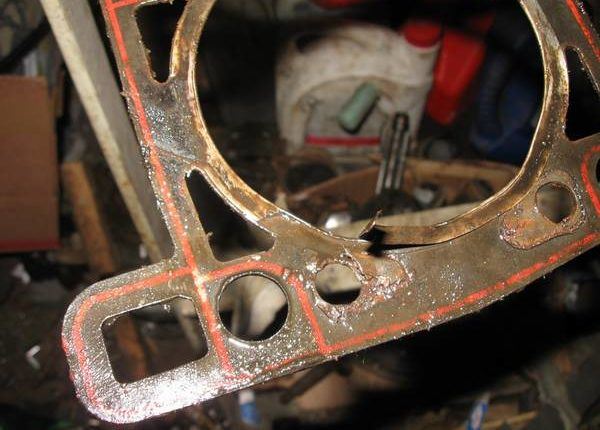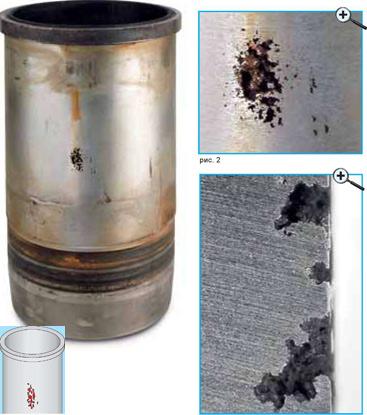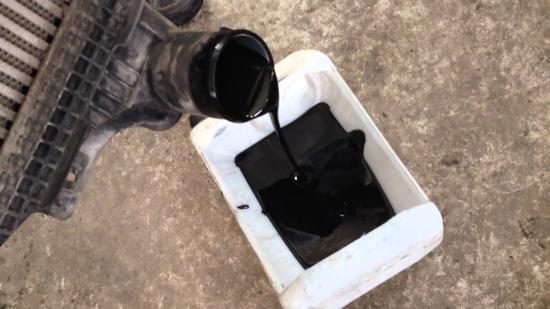White smoke from the exhaust pipe: causes and solutions
The exhaust of a good car should be colorless. The absence of any impurities or pungent odor indicates that the cylinder under the correct pressure burns the correct ratio of air and fuel, and additional gas purification (catalyst or particulate filter on diesel engines) does its job. In the article, we will consider the causes of white smoke from the exhaust pipe, methods for diagnosing a breakdown and how to solve it.
Content
- 1 fault detection smoke from muffler
- Petrol engine 2
- 2.1 reasons
- 2.2 diagnostics and repair
- 2.3 white smoke with a bluish tinge
- 3 diesel engine
- 4 Can I drive with this problem?
Determination of malfunctions in the smoke from the muffler
For a person, he often encounters car repairs, because it is no secret that each of the characteristics of exhaust gases is important in diagnosing a malfunction. But inexperienced motorists may overlook some important subtleties. It is easy to see the change in the color of the exhaust gases in any conditions, but it is worth remembering that white smoke can be of several types:
- smoke with a bluish tint;
- exhaust white and gray;
- thick smoke;
- steam exhaust.
For diagnostics, it is important, as are the operating modes of the power supply from exhaust white smoke:
- in cold weather;
- on a warm engine;
- with a sharp Peregudov;
- only on a cold one, and after the engine reaches operating temperatures, the smoke disappears.
Important! To identify the cause, you need to know the type of fuel that is used in the power unit. Often a malfunction in the power supply system, which is very different in diesel and gasoline engines.
diesel engine
Exhaust gas discoloration can be observed mainly in cold weather. Drivers who have noticed this phenomenon, do not worry, as the transparent white smoke is nothing but ordinary steam. Water is a natural combustion product of air-fuel mixture (AFM). In addition, any gas station you will find gasoline, completely purified water. The muffler can be smoked due to the fact that the vapor, when in contact with the cold surface of the exhaust system, partially condenseries. The exhaust gas density depends on the ambient temperature and humidity.
Before the onset of winter and with a slight frost, it is not worth worrying about steam from the muffler. But in severe frost with short trips, condenseries vapor on the walls of the exhaust system. The resulting water droplets quickly freeze during long stops and gradually create an ice plug. As a result, the driver will have problems starting the engine.
How to determine that the muffler is water? Hold the outlet of the tube with a clean piece of paper. As a result, the wet place should not be greasy. You can try it on a dry track. If the humidity zone disappeared without a trace, then there were vapors from the exhaust pipe at the time of inspection.
Causes
Often the appearance of a white exhaust color indicates the penetration of coolant into the cylinders. In addition, for any such failure, the following symptoms are characteristic:
- almost always occurs when the engine is warm. Antifreeze enters the cylinder due to leakage from the cooling jacket. When the engine warms up, the crack will increase, this is due to the coefficient of thermal expansion, which all components of the internal combustion engine have;
- accompanied by an exhaust gas breakthrough in the coolant expansion tank. During the compression and power strokes, a strong pressure builds up in the combustion chamber, which leads to the release of gas in the antifreeze circulation channel. Thus, the coolant will overheat the hot exhaust gases. To check, just unscrew the cap of the expansion tank, and then increase the speed. For greater reliability, the test must be done on a cold engine and on a warm one;
- the level of antifreeze gradually decreases, while the liquid in the tank may be an oil film;
- when you unscrew the plugs of the expansion tank, the system will increase pressure, and the bypass valve in the cap is not designed to carry this amount of gas. This can be checked by squeezing the tube with the coolant, which, when the emissions break through, becomes solid and swells a little.
The ingress of antifreeze into the cylinder can also contribute to the following breakdowns:
- breakdown of the cylinder head gasket (cylinder head). It completely recreates the shape of the holes required to enter the cylinder heads, coolant and oil. The gasket is part of the combustion chamber, so the space enveloping the cylinder works with the same high pressure as the cylinder wall and cylinder head. If the gasket breaks in the place between the combustion chamber and the cooling system channel, the antifreeze cylinder starts to flow;
- deformation of the cylinder head. The contact plane of the cylinder head should be as flat as possible. In case of deformation, it leaks, causing antifreeze to enter the cylinders;
- crack in the liner or cylinder block. Often such a malfunction affects the power units, in which the sleeve cylinders, vypressovyvaetsya in the body of the cylinder block. For better heat transfer in the immediate vicinity of the sleeve, the channels of the cooling system, which in the event of depressurization leads to the ingress of antifreeze into the cylinders;
- crack in the cylinder head.
Diagnostics and repair
To figure out the causes of white exhaust, you can use the same method with a piece of paper. Water vapor quickly evaporates from the surface of the sheet, while the combustion products of antifreeze will leave a greasy stain.
To determine the malfunction, resulting in coolant entering the combustion chamber is much more difficult. Any of the assumptions is checked by autopsy, so no serious engine repair is indispensable.
The least painful scenario is a gasket breakdown. In this case, the repair is limited to installing a new cylinder head gasket, replacing the bolts during operation pulls the motor, and milling the head mating plane. In some cases, you can even do without milling. If the problem is not the gasket visually and cannot find a crack through which antifreeze can pass, then the BC and MBK are sent for a pressure test. In a convenient place of the defect, you can also brew a cracked shell for replacement.
White smoke with a bluish tint
The color of the exhaust gases occurs during the combustion of oil in the engine cylinders and often occurs with Peregudov. The following failures may be the cause:
- cover oil wear;
- coking of oil scraper rings;
- wear of the cylinder-piston group (CPG);
- turbine malfunctions. In this case, we say that the turbine drives oil. To verify this, disconnect the air pipe from the cold part of the supercharger, there you will find a large amount of engine oil.
On a gasoline engine, increased oil consumption can be determined by the condition of the spark plugs, which in this case have a black oily residue.
diesel engine
As with a gasoline engine, white smoke from a diesel engine’s tailpipe is due to contact with antifreeze or oil in the combustion chamber. However, this phenomenon may signal a problem that is unique to HFO engines. We are talking about incomplete TPVS combustion, which occurs for the following reasons:
- Incorrect injection timing. The reason for this may be not only the timing phase, but compress the nozzle;
- insufficient pressure in the combustion chamber. May occur due to natural wear of the CPG, in which the compression rings are no longer able to seal the combustion chamber. When the situation with the fallen compression is not yet critical, the power supply unit produces a white-gray exhaust only when it is cold.
Can I drive with this problem?
While running the engine with a similar problem, it greatly increases the risk of overheating. In such a situation, it is important to make sure that antifreeze in large quantities does not get into the oil. When the emulsion appears in the pan, even to the nearest service station, the car must go on a tow truck. A breakdown of the cylinder head gasket is possible and the opposite is possible – oil getting into the coolant, which also did not bode well for the engine. In the worst case, water hammer, which may occur due to filling the cylinder with coolant during parking. If you then try to start the car, the rod will bend, then you will have to overhaul the power unit.


